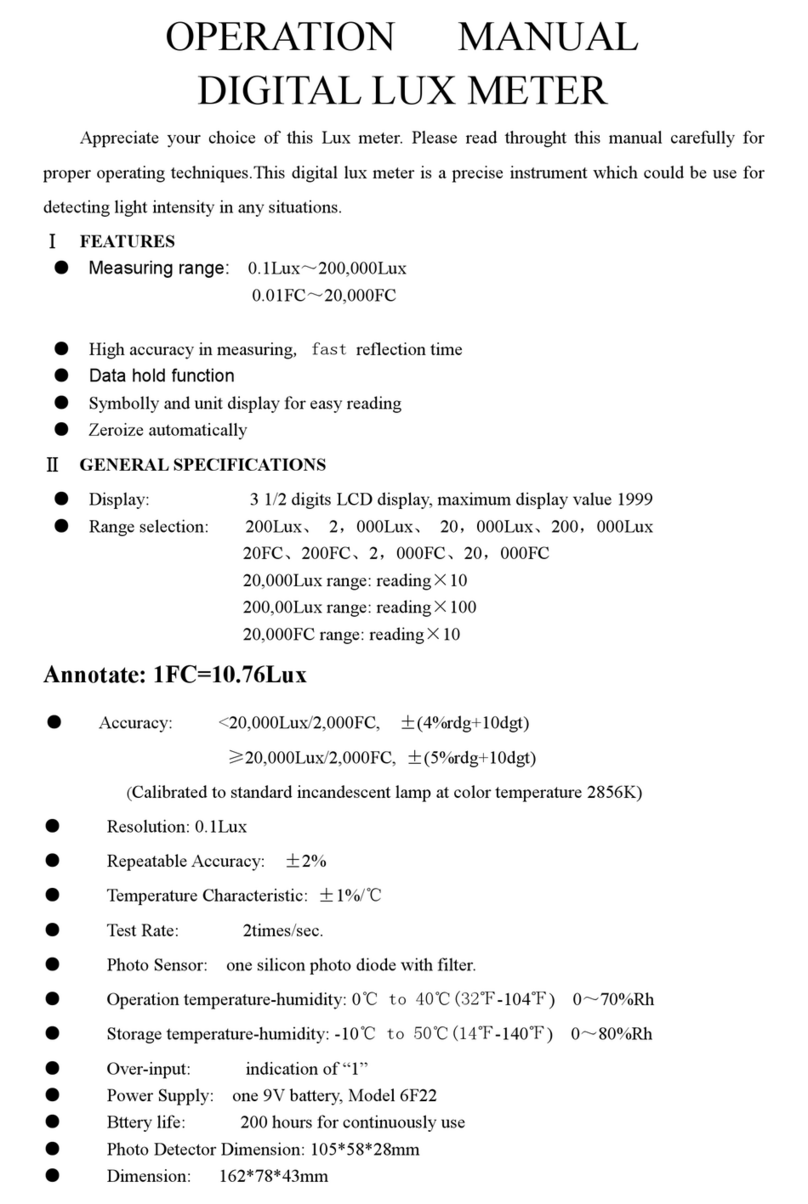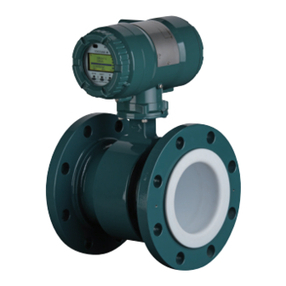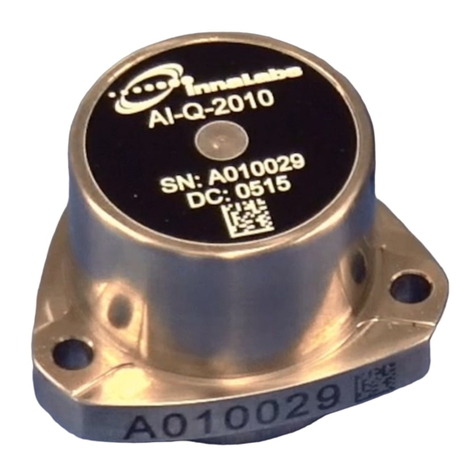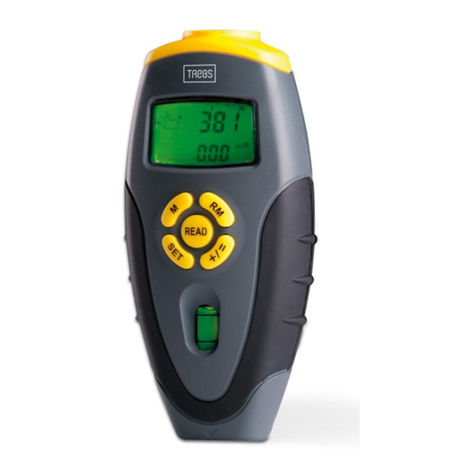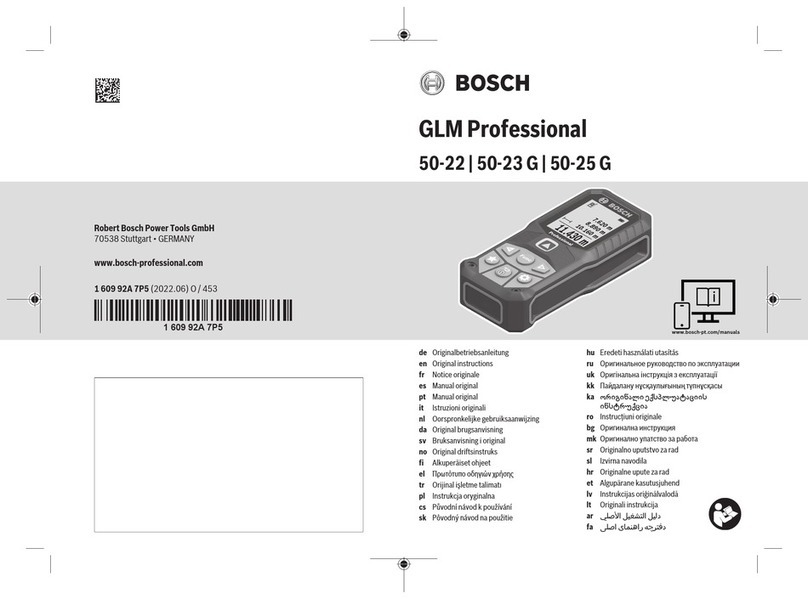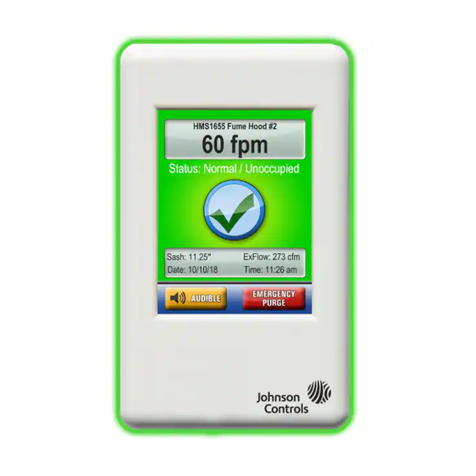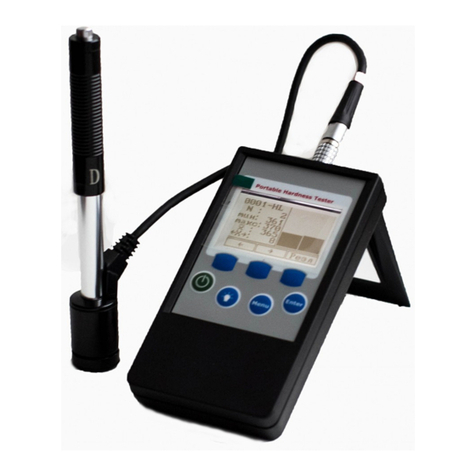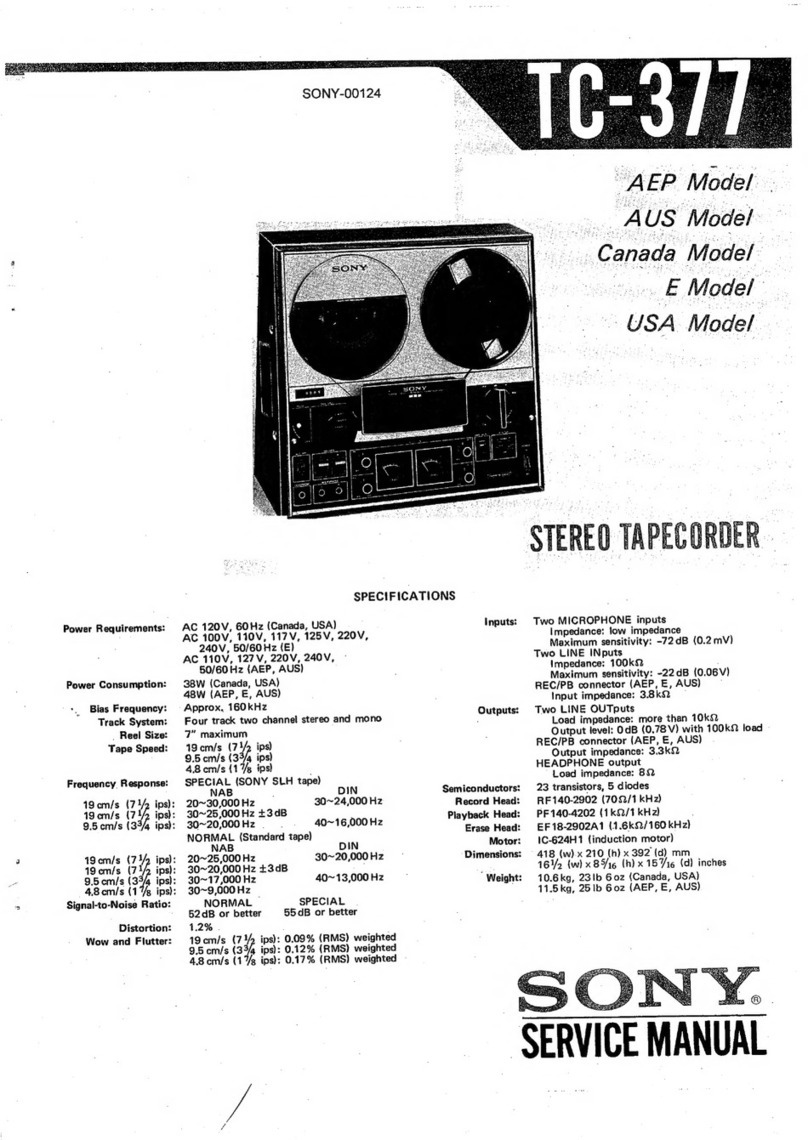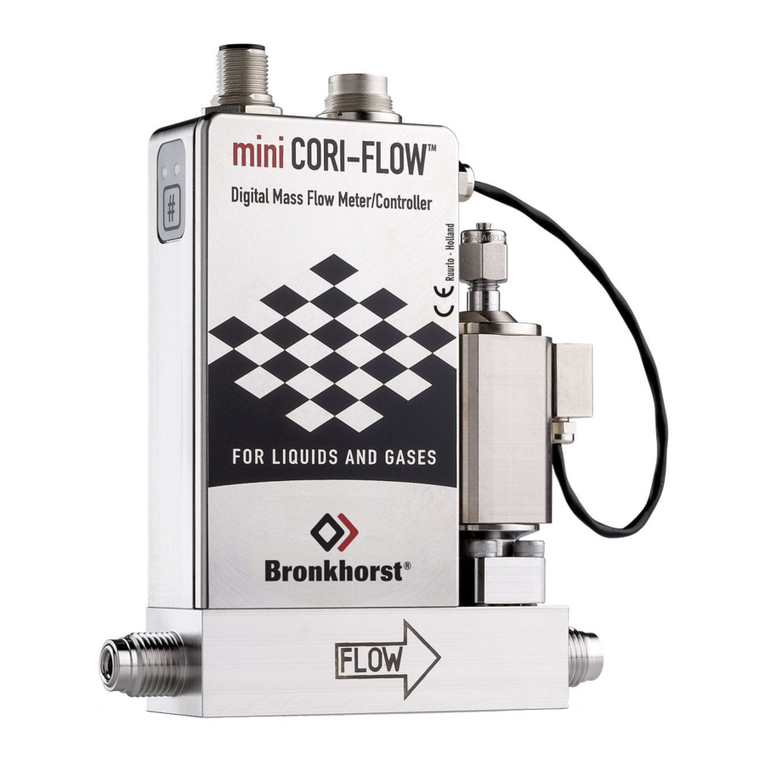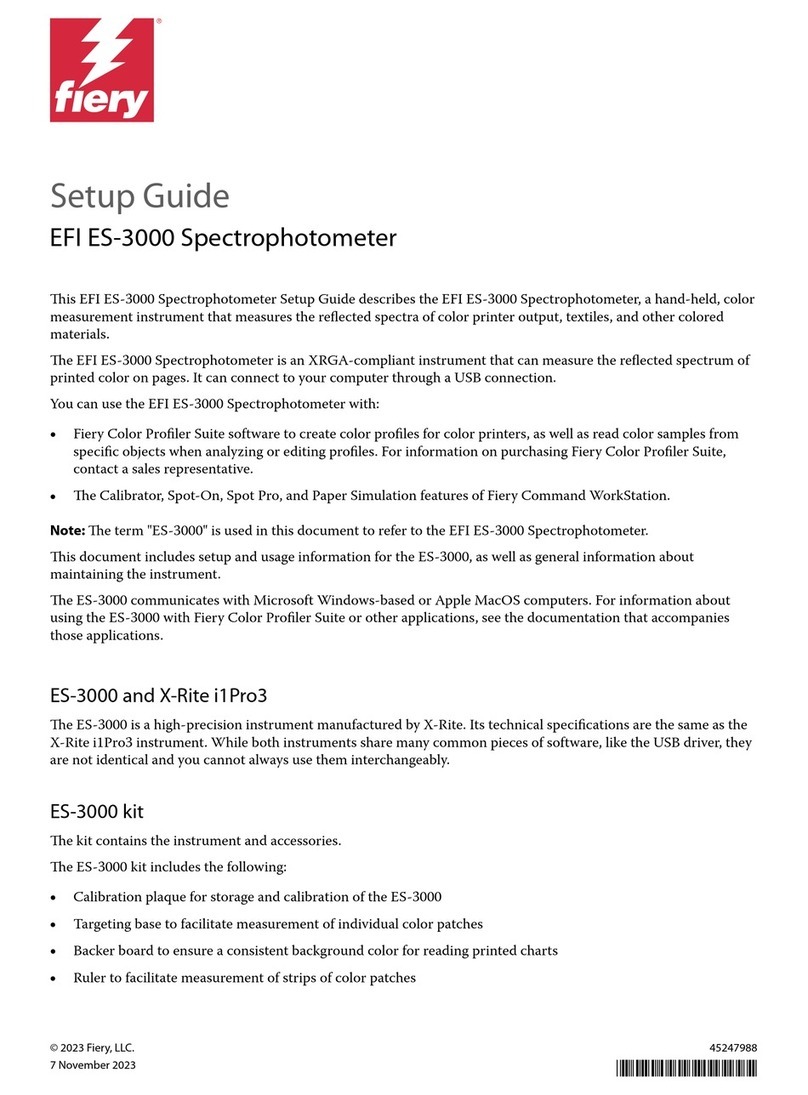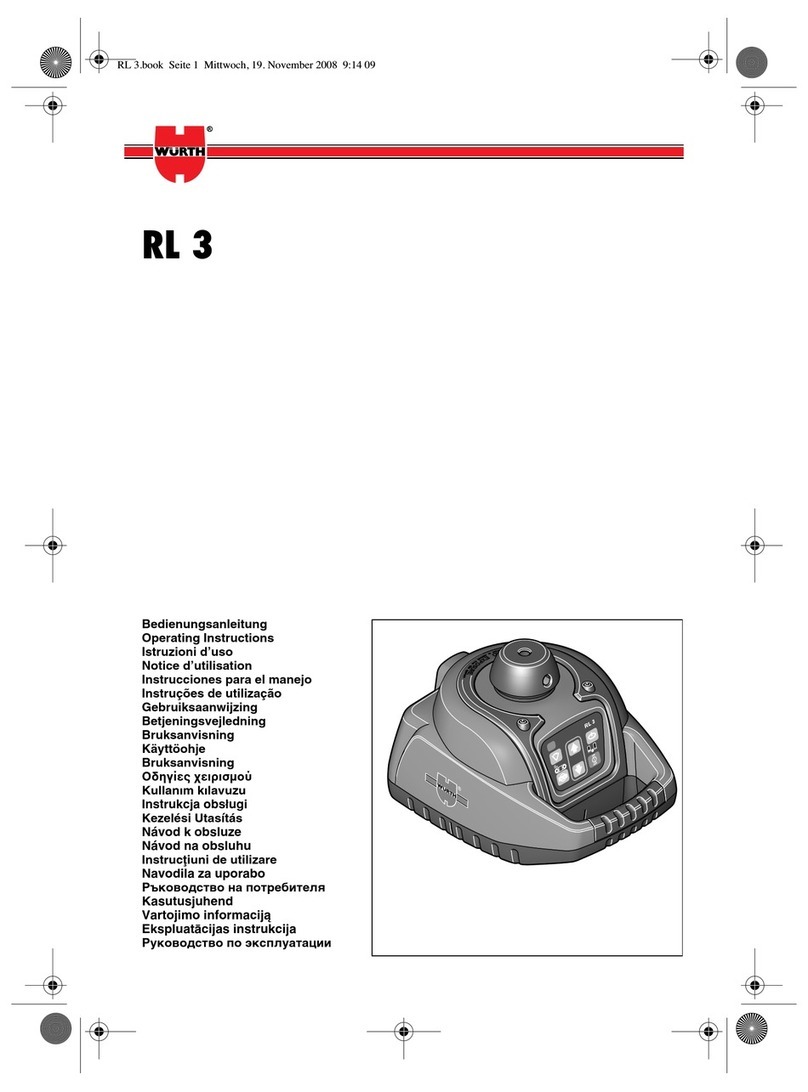Data Translation DT9800 Series User manual

DT9800 Series
UM-17473-L
User’s Manual

Eleventh Edition
March, 2004
Data Translation, Inc.
100 Locke Drive
Marlboro, MA 01752-1192
(508) 481-3700
www.datatranslation.com
Fax: (508) 481-8620
E-mail: [email protected]
Copyright © 1999 to 2004 by Data Translation,
Inc.
All rights reserved. No part of this publication
may be reproduced, stored in a retrieval system,
or transmitted, in any form by any means,
electronic, mechanical, by photocopying,
recording, or otherwise, without the prior
written permission of Data Translation, Inc.
Information furnished by Data Translation, Inc.
is believed to be accurate and reliable; however,
no responsibility is assumed by Data Translation,
Inc. for its use; nor for any infringements of
patents or other rights of third parties which
may result from its use. No license is granted by
implication or otherwise under any patent rights
of Data Translation, Inc.
Use, duplication, or disclosure by the United
States Government is subject to restrictions as set
forth in subparagraph (c)(1)(ii) of the Rights in
Technical Data and Computer software clause at
48 C.F.R, 252.227-7013, or in subparagraph (c)(2)
of the Commercial computer Software -
Registered Rights clause at 48 C.F.R., 52-227-19 as
applicable. Data Translation, Inc., 100 Locke
Drive, Marlboro, MA 01752
Data Translation® is a registered trademark of
Data Translation, Inc. DT-Open LayersTM,
DataAcq SDKTM, DataAcq OMNI CDTM, DT-LV
LinkTM, DTx-EZTM, and DT VPITM are trademarks
of Data Translation, Inc.
All other brand and product names are
trademarks or registered trademarks of their
respective companies.

Radio and Television Interference
This equipment has been tested and found to comply with CISPR
EN55022 Class A, and EN50082-1 (CE) requirements and also with
the limits for a Class A digital device, pursuant to Part 15 of the FCC
Rules. These limits are designed to provide reasonable protection
against harmful interference when the equipment is operated in a
commercial environment. This equipment generates, uses, and can
radiate radio frequency energy and, if not installed and used in
accordance with the instruction manual, may cause harmful
interference to radio communications. Operation of this equipment in
a residential area is likely to cause harmful interference, in which case
the user will be required to correct the interference at his own
expense.
Changes or modifications to this equipment not expressly approved
by Data Translation could void your authority to operate the
equipment under Part 15 of the FCC Rules.
Note: This product was verified to meet FCC requirements under
test conditions that included use of shielded cables and connectors
between system components. It is important that you use shielded
cables and connectors to reduce the possibility of causing
interference to radio, television, and other electronic devices.
Canadian Department of Communications Statement
This digital apparatus does not exceed the Class A limits for radio
noise emissions from digital apparatus set out in the Radio
Interference Regulations of the Canadian Department of
Communications.
Le présent appareil numérique n’émet pas de bruits radioélectriques
dépassant les limites applicables aux appareils numériques de la class
A prescrites dans le Règlement sur le brouillage radioélectrique
édicté par le Ministère des Communications du Canada.


v
Table of Contents
About this Manual . . . . . . . . . . . . . . . . . . . . . . . . . . . . . . . . . . ix
Intended Audience. . . . . . . . . . . . . . . . . . . . . . . . . . . . . . . . . . . . . . ix
What You Should Learn from this Manual. . . . . . . . . . . . . . . . . . ix
Conventions Used in this Manual . . . . . . . . . . . . . . . . . . . . . . . . . . x
Related Information . . . . . . . . . . . . . . . . . . . . . . . . . . . . . . . . . . . . . xi
Where To Get Help. . . . . . . . . . . . . . . . . . . . . . . . . . . . . . . . . . . . . . xii
Chapter 1: Overview . . . . . . . . . . . . . . . . . . . . . . . . . . . . . . . . 1
Features . . . . . . . . . . . . . . . . . . . . . . . . . . . . . . . . . . . . . . . . . . . . . . . . 2
Supported Software . . . . . . . . . . . . . . . . . . . . . . . . . . . . . . . . . . . . . . 7
Accessories . . . . . . . . . . . . . . . . . . . . . . . . . . . . . . . . . . . . . . . . . . . . . 9
Chapter 2: Principles of Operation . . . . . . . . . . . . . . . . . . . 11
Analog Input Features. . . . . . . . . . . . . . . . . . . . . . . . . . . . . . . . . . . 13
Input Resolution . . . . . . . . . . . . . . . . . . . . . . . . . . . . . . . . . . . . 13
Analog Input Channels . . . . . . . . . . . . . . . . . . . . . . . . . . . . . . 14
Specifying a Single Channel . . . . . . . . . . . . . . . . . . . . . . 15
Specifying One or More Channels . . . . . . . . . . . . . . . . . 16
Specifying Digital Input Lines in the Analog Input
Channel List . . . . . . . . . . . . . . . . . . . . . . . . . . . . . . . . . . . . 16
Performing Dynamic Digital Output Operations . . . . 17
Input Ranges and Gains . . . . . . . . . . . . . . . . . . . . . . . . . . . . . . 19
Specifying the Gain for a Single Channel . . . . . . . . . . . 22
Specifying the Gain for One or More Channels . . . . . . 22
A/D Sample Clock Sources . . . . . . . . . . . . . . . . . . . . . . . . . . . 23
Internal A/D Sample Clock . . . . . . . . . . . . . . . . . . . . . . . 23
External A/D Sample Clock . . . . . . . . . . . . . . . . . . . . . . 25

Contents
vi
Triggers . . . . . . . . . . . . . . . . . . . . . . . . . . . . . . . . . . . . . . . . . . . . 25
Analog Input Conversion Modes . . . . . . . . . . . . . . . . . . . . . . 26
Continuously Paced Scan Mode . . . . . . . . . . . . . . . . . . . 27
Triggered Scan Mode . . . . . . . . . . . . . . . . . . . . . . . . . . . . 28
Internally Retriggered Scan Mode . . . . . . . . . . . . . . 28
Externally Retriggered Scan Mode. . . . . . . . . . . . . . 31
Data Format . . . . . . . . . . . . . . . . . . . . . . . . . . . . . . . . . . . . . . . . 33
Data Transfer . . . . . . . . . . . . . . . . . . . . . . . . . . . . . . . . . . . . . . . 36
Error Conditions . . . . . . . . . . . . . . . . . . . . . . . . . . . . . . . . . . . . 37
Analog Output Features . . . . . . . . . . . . . . . . . . . . . . . . . . . . . . . . . 39
Output Resolution. . . . . . . . . . . . . . . . . . . . . . . . . . . . . . . . . . . 39
Analog Output Channels . . . . . . . . . . . . . . . . . . . . . . . . . . . . . 40
Output Ranges and Gains . . . . . . . . . . . . . . . . . . . . . . . . . . . . 41
Conversion Modes . . . . . . . . . . . . . . . . . . . . . . . . . . . . . . . . . . 42
Data Format . . . . . . . . . . . . . . . . . . . . . . . . . . . . . . . . . . . . . . . . 42
Digital I/O Features. . . . . . . . . . . . . . . . . . . . . . . . . . . . . . . . . . . . . 44
Digital I/O Lines . . . . . . . . . . . . . . . . . . . . . . . . . . . . . . . . . . . . 44
Resolution. . . . . . . . . . . . . . . . . . . . . . . . . . . . . . . . . . . . . . . . . . 45
Operation Modes. . . . . . . . . . . . . . . . . . . . . . . . . . . . . . . . . . . . 45
Counter/Timer Features . . . . . . . . . . . . . . . . . . . . . . . . . . . . . . . . . 46
Units . . . . . . . . . . . . . . . . . . . . . . . . . . . . . . . . . . . . . . . . . . . . . . 46
C/T Clock Sources . . . . . . . . . . . . . . . . . . . . . . . . . . . . . . . . . . 47
Internal C/T Clock . . . . . . . . . . . . . . . . . . . . . . . . . . . . . . 47
External C/T Clock . . . . . . . . . . . . . . . . . . . . . . . . . . . . . . 47
Internally Cascaded Clock . . . . . . . . . . . . . . . . . . . . . . . . 48
Gate Types . . . . . . . . . . . . . . . . . . . . . . . . . . . . . . . . . . . . . . . . . 49
Pulse Output Types and Duty Cycles . . . . . . . . . . . . . . . . . . 51
Counter/Timer Operation Modes . . . . . . . . . . . . . . . . . . . . . 53
Event Counting . . . . . . . . . . . . . . . . . . . . . . . . . . . . . . . . . 53
Frequency Measurement . . . . . . . . . . . . . . . . . . . . . . . . . 54

Contents
vii
Rate Generation . . . . . . . . . . . . . . . . . . . . . . . . . . . . . . . . . 56
One-Shot . . . . . . . . . . . . . . . . . . . . . . . . . . . . . . . . . . . . . . . 59
Repetitive One-Shot . . . . . . . . . . . . . . . . . . . . . . . . . . . . . 61
Chapter 3: Supported Device Driver Capabilities. . . . . . . . 65
Chapter 4: Programming Flowcharts. . . . . . . . . . . . . . . . . . 77
Single-Value Operations . . . . . . . . . . . . . . . . . . . . . . . . . . . . . . . . . 79
Continuous A/D Operations . . . . . . . . . . . . . . . . . . . . . . . . . . . . . 81
Event Counting Operations . . . . . . . . . . . . . . . . . . . . . . . . . . . . . . 83
Frequency Measurement Operations . . . . . . . . . . . . . . . . . . . . . . 85
Pulse Output Operations. . . . . . . . . . . . . . . . . . . . . . . . . . . . . . . . . 87
Chapter 5: Calibration . . . . . . . . . . . . . . . . . . . . . . . . . . . . . 101
Running the Calibration Utility . . . . . . . . . . . . . . . . . . . . . . . . . . 103
Calibrating the Analog Input Subsystem . . . . . . . . . . . . . . . . . . 104
Configuring for Calibration. . . . . . . . . . . . . . . . . . . . . . . . . . 104
Calibrating the Analog Input Circuitry . . . . . . . . . . . . . . . . 105
Using the Auto-Calibration Procedure . . . . . . . . . . . . 105
Using the Manual Calibration Procedure . . . . . . . . . . 106
Calibrating the Thermocouple Circuitry . . . . . . . . . . . . . . . 107
Calibrating the Analog Output Subsystem . . . . . . . . . . . . . 109
Chapter 6: Troubleshooting . . . . . . . . . . . . . . . . . . . . . . . . 111
General Checklist . . . . . . . . . . . . . . . . . . . . . . . . . . . . . . . . . . . . . . 112
Service and Support . . . . . . . . . . . . . . . . . . . . . . . . . . . . . . . . . . . . 115
Telephone Technical Support. . . . . . . . . . . . . . . . . . . . . . . . . 115
E-Mail and Fax Support . . . . . . . . . . . . . . . . . . . . . . . . . . . . . 117
World-Wide Web Support . . . . . . . . . . . . . . . . . . . . . . . . . . . 117
If Your Board Needs Factory Service. . . . . . . . . . . . . . . . . . . . . . 118

ix
About this Manual
This manual describes the features of the DT9800 Series function
modules, the capabilities of the DT9800 Series Device Driver, and
how to program the DT9800 Series function modules using DT-Open
Layers™software. Calibration and troubleshooting information is
also provided.
Intended Audience
This document is intended for engineers, scientists, technicians, or
others responsible for using and/or programming the DT9800 Series
function modules for data acquisition operations in Microsoft®
Windows® 98, Windows Me (Millennium Edition), Windows 2000,
Windows XP, or the Macintosh® (MAC OS 9.0) operating system. It is
assumed that you have some familiarity with data acquisition
principles and that you understand your application.
What You Should Learn from this Manual
This manual provides detailed information about the features of the
DT9800 Series function modules and the capabilities of the DT9800
Series Device Driver. The manual is organized as follows:
•Chapter 1, “Overview,” describes the major features of the
modules, as well as the supported software and accessories for
the modules.
•Chapter 2, “Principles of Operation,” describes all of the features
of the modules and how to use them in your application.
•Chapter 3, “Supported Device Driver Capabilities,” lists the data
acquisition subsystems and the associated features accessible
using the DT9800 Series Device Driver.

About this Manual
x
•Chapter 4, “Programming Flowcharts,” describes the processes
you must follow to program the subsystems on the DT9800 Series
module using DT-Open Layers-compliant software.
•Chapter 5, “Calibration,” describes how to calibrate the analog
I/O circuitry of the modules.
•Chapter 6, “Troubleshooting,” provides information that you can
use to resolve problems with the modules and the device driver,
should they occur.
•Appendix A, “Specifications,” lists the specifications of the
modules.
•Appendix B, “Connector Pin Assignments,” shows the pin
assignments for the connectors and the screw terminal
assignments for the modules.
• An index completes this manual.
Conventions Used in this Manual
The following conventions are used in this manual:
• Notes provide useful information or information that requires
special emphasis, cautions provide information to help you avoid
losing data or damaging your equipment, and warnings provide
information to help you avoid catastrophic damage to yourself or
your equipment.
• Items that you select or type are shown in bold.

About this Manual
xi
Related Information
Refer to the following documents for more information on using the
DT9800 Series function modules:
•Benefits of the Universal Serial Bus for Data Acquisition. This white
paper describes why USB is an attractive alternative for data
acquisition. It is available on the Data Translation web site
(www.datatranslation.com).
•DT9800 Series Getting Started Manual (UM-17471). This manual,
included on the Data Acquisition OMNI CDTM, describes the how
to install the DT9800 Series function modules and related
software.
• DT Measure Foundry Getting Started Manual (UM-19298) and
online help. These documents describe how to use DT Measure
Foundry™ to build drag-and-drop test and measurement
applications for Data Translation® data acquisition devices
without programming.
•DataAcq SDK User’s Manual (UM-18326). For programmers who
are developing their own application programs using the
Microsoft C compiler, this manual describes how to use the
DT-Open Layers DataAcq SDKTM to access the capabilities of
Data Translation data acquisition devices.
•DTx-EZ Getting Started Manual (UM-15428). This manual
describes how to use the ActiveX controls provided in DTx-EZTM
to access the capabilities of Data Translation data acquisition
devices in Microsoft Visual Basic® or Visual C++®.
•DT VPI User Manual (UM-16150). This manual describes how to
use DT VPITM and the Agilent® VEE™ visual programming
language to access the capabilities of Data Translation data
acquisition devices.
•DT-LV Link Getting Started Manual (UM-15790). This manual
describes how to use DT-LV LinkTM with the LabVIEW®
graphical programming language to access the capabilities of
Data Translation data acquisition devices.

About this Manual
xii
• Microsoft Windows 98, Windows Me, Windows 2000, Windows
XP, or Macintosh documentation.
• USB web site (http://www.usb.org).
• Omega Complete Temperature Measurement Handbook and
Encyclopedia®. This document, published by Omega Engineering,
provides information on how to linearize voltage values into
temperature readings for various thermocouple types.
Where To Get Help
Should you run into problems installing or using a DT9800 Series
function module, the Data Translation Technical Support Department
is available to provide technical assistance. Refer to Chapter 6 for
more information. If you are outside the United States or Canada, call
your local distributor, whose number is listed in your Data
Translation product handbook.

1
1
Overview
Features . . . . . . . . . . . . . . . . . . . . . . . . . . . . . . . . . . . . . . . . . . . . . . . . 2
Supported Software . . . . . . . . . . . . . . . . . . . . . . . . . . . . . . . . . . . . . . 7
Accessories . . . . . . . . . . . . . . . . . . . . . . . . . . . . . . . . . . . . . . . . . . . . . 9

Chapter 1
2
Features
The DT9800 Series is a family of low-cost, multifunction data
acquisition modules for the Universal Serial Bus (USB). USB is a new
standard for connecting PCs to peripheral devices, such as printers,
mice, and modems, and was developed to make more low-cost ports
available for the increasing number of these devices.
Most new computers have two USB ports that allow direct
connection to USB devices. You can expand the number of USB
devices attached to a single USB port by using expansion hubs.
DT9800 Series function modules are part of the high-power,
bus-powered USB class; therefore, the modules do not require
external power, but the expansion hubs do require external power.
DT9800 Series function modules reside outside of the PC and install
with a single cable to ease installation. Modules can be “hot
swapped” or plugged and unplugged while the PC is on, making
them useful for many data acquisition applications.
The DT9800 Series includes the following subseries: DT9800 Standard
Series, DT9800-MAC Series, DT9800-EC Series, and DT9800-EC-I
Series.
The DT9800-EC Series modules are not isolated; the DT9800 Standard
Series, DT9800-MAC Series, and DT9800-EC-I Series modules are
isolated. In addition, the DT9800-EC and DT9800-EC-I Series
modules support the use of optional backplanes and screw terminal
panels that provide signal conditioning and other features. Table 1
lists the function modules in each series and the key features of each.

Overview
3
1
1
1
1
1
1
1
1
1
Table 1: Key Features Among the DT9800 Series
Series
Operating
System
Function
Modules
# of
Analog
Inputs
Analog
Input
Sample
Rate
# of
Analog
Outputs
# of
Digital
I/O
Lines
# of
Counter
/Timers
DT9800
Standard
Series
Windows DT9801a16 SE/
8 DI
100 kS/s 0 8 input,
8 output
2
DT9802a16 SE/
8 DI
100 kS/s 2 8 input,
8 output
2
DT9803b16 SE/
8 DI
100 kS/s 0 8 input,
8 output
2
DT9804b16 SE/
8 DI
100 kS/s 2 8 input,
8 output
2
DT9805c16 SE/
8 DI/ 7
thermo-
couples
and 1
CJC
50 kS/s 0 8 input,
8 output
2
DT9806c16 SE/
8 DI/ 7
thermo-
couples
and 1
CJC
50 kS/s 2 8 input,
8 output
2

Chapter 1
4
DT9800-
MAC
Series
Macintosh DT9801-
MACa
16 SE/
8 DI
100 kS/s 0 8 input,
8 output
2
DT9802-
MACa
16 SE/
8 DI
100 kS/s 2 8 input,
8 output
2
DT9803-
MACb
16 SE/
8 DI
100 kS/s 0 8 input,
8 output
2
DT9804-
MACb
16 SE/
8 DI
100 kS/s 2 8 input,
8 output
2
DT9800-
EC
Seriesd
Windows DT9801-
ECa
16 SE/
8 DIe
100 kS/s 0 8 input,
8 output
2
DT9802-
ECa
16 SE/
8 DIe
100 kS/s 2f8 input,
8 output
2
DT9803-
ECb
16 SE/
8 DIg
100 kS/s 0 8 input,
8 output
2
DT9804-
ECb
16 SE/
8 DIg
100 kS/s 2h8 input,
8 output
2
DT9800-
EC-I
Seriesd
Windows DT9801-
EC-Ia
16 SE/
8 DIe
100 kS/s 0 8 input,
8 output
2
DT9802-
EC-Ia
16 SE/
8 DIe
100 kS/s 2f8 input,
8 output
2
DT9803-
EC-Ib
16 SE/
8 DIg
100 kS/s 0 8 input,
8 output
2
DT9804-
EC-I
16 SE/
8 DIg
100 kS/s 2h8 input,
8 output
2
a. The resolution is 12 bits.
b. The resolution is 16 bits.
Table 1: Key Features Among the DT9800 Series (cont.)
Series
Operating
System
Function
Modules
# of
Analog
Inputs
Analog
Input
Sample
Rate
# of
Analog
Outputs
# of
Digital
I/O
Lines
# of
Counter
/Timers

Overview
5
1
1
1
1
1
1
1
1
1
All DT9800 Series function modules share the following major
features:
• USB compatibility;
• Software configurable termination resistance for differential
inputs on a channel-by-channel basis.
• Input gains of 1, 2, 4, and 8 for all modules except the DT9805 and
DT9806, which support gains of 1, 10, 100, and 500;
• Continuously paced and triggered scan capability;
• A 32-location channel-gain list that supports sampling analog
input channels at the same or different gains in sequential or
random order;
• Internal and external clock sources for the analog input
subsystem;
• Digital TTL triggering for the analog input subsystem;
• One 8-bit digital input port and one 8-bit digital output port; the
digital input lines can be included as part of the analog input
channel-gain list to correlate the timing of analog and digital
events; digital outputs can drive external solid-state relays; and
• One dynamic digital output line;
• Two 16-bit user counter/timers programmable for event
counting, frequency measurement, rate generation (continuous
pulse output), one-shot, and repetitive-one shot pulse output
operations.
• Programmable gate types and pulse output types.
c. The gains provided on the DT9805 and DT9806 are 1, 10, 100, and 500. All other modules provide
gains of 1, 2, 4, and 8.
d. The DT9800-EC Series boards are nonisolated; the DT9800-EC-I Series boards and all other DT9800
Series boards are isolated.
e. The analog input range is 0 to 10 V or ±10 V.
f. The analog output range is 0 to 10 V, 0 to 5 V, ±10 V, or ±5 V.
g. The analog input range is ±10 V.
h. The analog output range is ±10 V.

Chapter 1
6
In addition, the DT9805 and DT9806 function modules provide
thermocouples and low-level analog input capability. The DT9800
Standard, DT9800-EC, and DT9800-EC-I Series modules also provide
software calibration for the analog I/O subsystems.

Overview
7
1
1
1
1
1
1
1
1
1
Supported Software
The following software is available for use with the DT9800 Series
modules:
•DT9800 Series Device Driver −This software is provided on the
Data Acquisition OMNI CDTM (for Windows 98, Windows Me,
Windows 2000, and Windows XP) or the DT9800 Series CD-ROM
for the Macintosh, and is shipped with the module. The device
driver allows you to use a DT9800 Series function module with
any of the supported software packages or utilities. Refer to the
DT9800 Series Getting Started Manual (UM-17471) for more
information on loading and configuring the device driver.
•Quick Data Acq application −This software is provided on the
Data Acquisition OMNI CD (for Windows 98, Windows Me,
Windows 2000, and Windows XP) or the DT9800 Series CD-ROM
for the Macintosh, and is shipped with the module. The Quick
Data Acq application provides a quick way to get up and running
using a DT9800 Series function module. Using this application,
you can verify key features of the modules, display data on the
screen, and save data to disk. Refer to the DT9800 Series Getting
Started Manual (UM-17471) for more information on using the
Quick Data Acq application.
•Scope application −This software is shipped with the board on
the Data Acquisition OMNI CD. This application emulates three
basic instruments: a simple oscilloscope chart recorder, a data
logger, and a multi-channel oscilloscope. Using the Scope
application, you can monitor data online and capture it to disk.
Refer to the online documentation provided on the CD-ROM for
more information.
•Calibration Utility −This software is provided on the Data
Acquisition OMNI CD-ROM (for Windows 98, Windows Me,
Windows 2000, and Windows XP). (Currently, this utility is not
provided for the Macintosh.) The Calibration Utility allows you
to calibrate the analog I/O circuitry of the function modules.
Refer to Chapter 5 for more information on this utility.

Chapter 1
8
•DT Measure Foundry −An evaluation version of this software is
included on the Data Acquisition OMNI CD. DT Measure
Foundry is drag-and-drop test and measurement application
builder designed to give you top performance with ease-of-use
development. Order the full development version of this
software package to develop your own application using real
hardware.
•DataAcq SDK −This software is shipped on the Data Acquisition
OMNI CD. Use the Data Acq SDK if you want to use Windows
98, Windows Me, Windows NT 4.0, Windows 2000, or Windows
XP to develop your own application software for the DT9800
Series boards using the Microsoft C compiler; the DataAcq SDK
complies with the DT-Open Layers standard.
•DTx-EZ −Order this optional software package if you want to
use ActiveX controls to access the capabilities of the DT9800
Series boards using Microsoft Visual Basic or Visual C++; DTx-EZ
complies with the DT-Open Layersstandard.
•DT VPI −Order this optional software package if you want to
use the Aglient VEE visual programming language to access the
capabilities of the DT9800 Series boards.
•DT-LV Link −Order this optional software package if you want
to use the LabVIEW graphical programming language to access
the capabilities of the DT9800 Series boards.
•Testpoin t −Order this optional software package if you want use
a drag-and-drop software environment for designing test,
measurement, and data acquisition applications.
Refer to the Data Translation data acquisition catalog for information
about selecting the right software package for your needs.
This manual suits for next models
2
Table of contents
Other Data Translation Measuring Instrument manuals

Data Translation
Data Translation DT9812 Series User manual
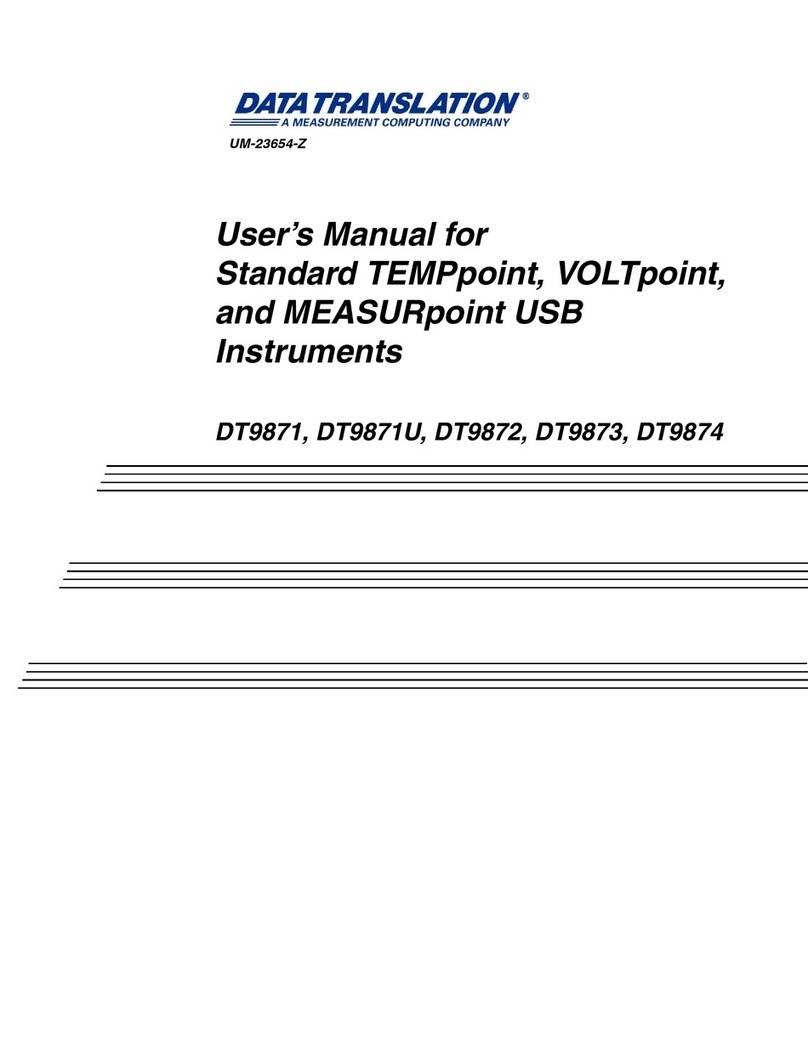
Data Translation
Data Translation DT9871 User manual
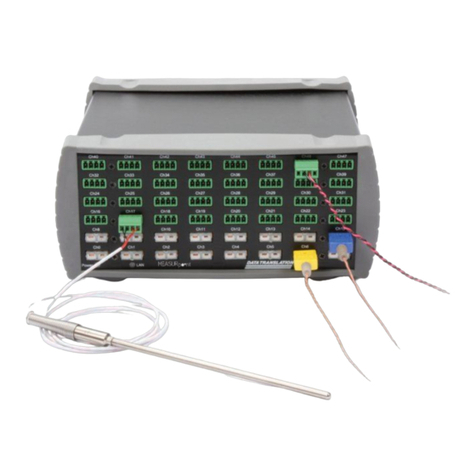
Data Translation
Data Translation DT9871U User manual
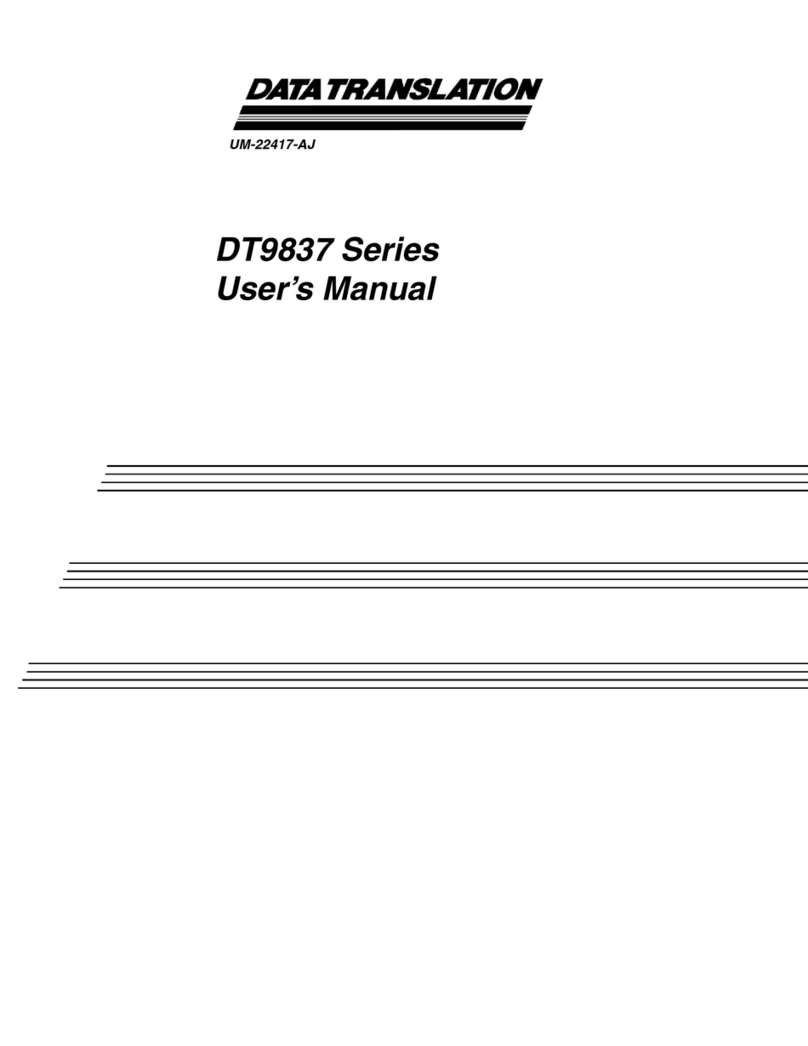
Data Translation
Data Translation DT9837A User manual
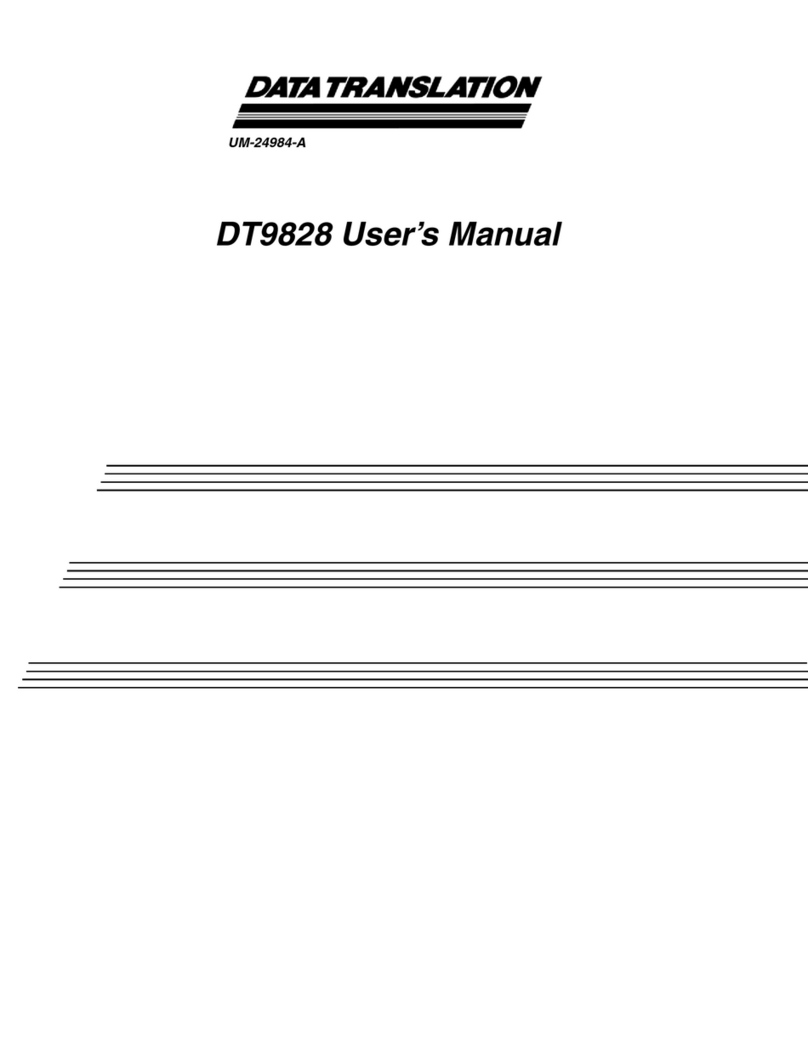
Data Translation
Data Translation DT9828 User manual
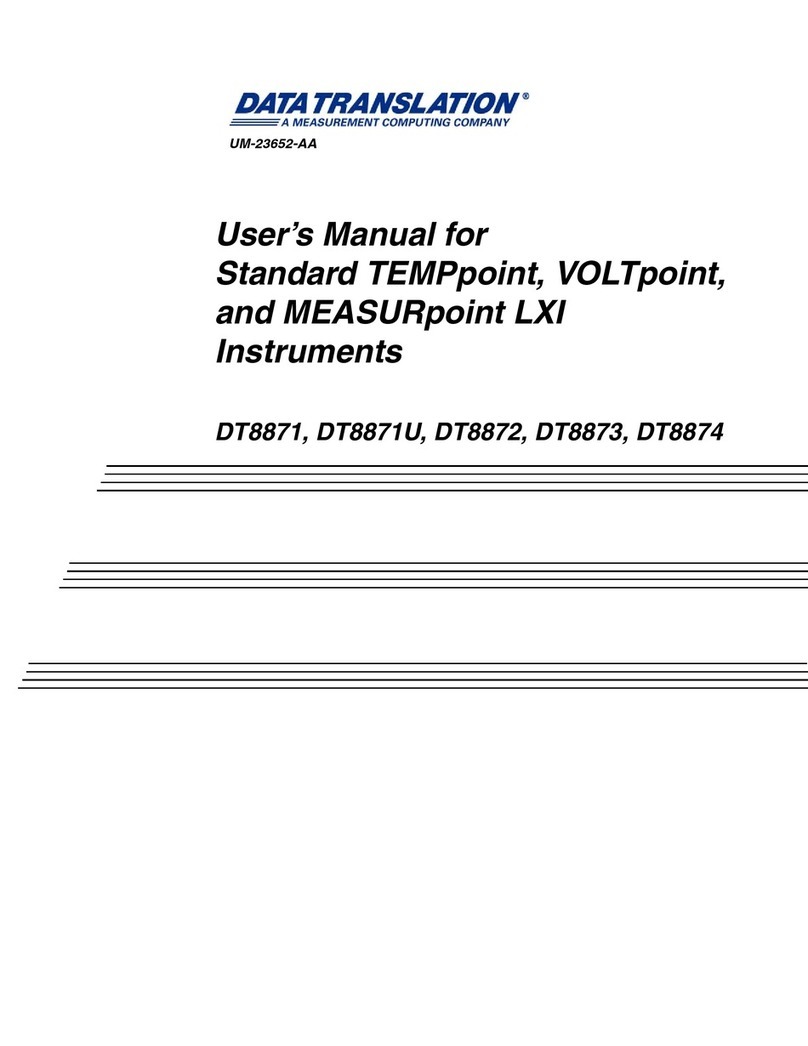
Data Translation
Data Translation DT8871 User manual


